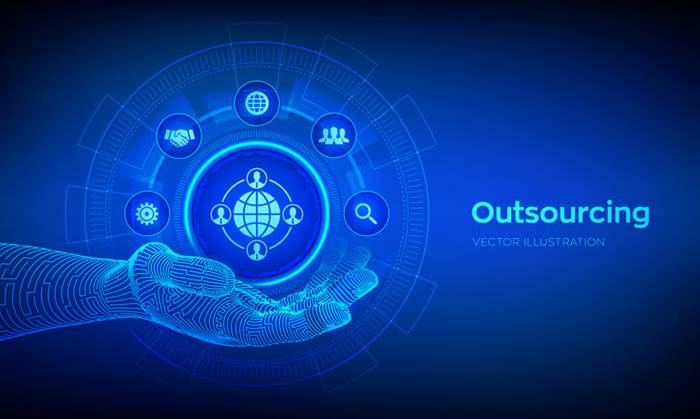What is Cloud Computing? Pros and Cons of Different Types of Services
Customers can scale services to support fluctuating workloads, adding more services or features they grow. In the public cloud model, a third-party cloud service provider (CSP) delivers the cloud service over the internet. Public cloud services are sold on demand, typically by the minute or hour, though long-term commitments are available for many services. Customers only pay for the central processing unit cycles, storage or bandwidth they consume.

Finding a cloud provider that provides all three layers of the cloud—in connected and unprecedented ways—is essential. Moreover, businesses need a complete, integrated platform with intelligent solutions at every layer. They are a good way to describe how people are working together today, how they would like to work together ideally, and how their work will be shaped with the introduction of new cloud technology.
How does cloud computing work?
Because software and data are stored remotely in cloud computing, data security and platform security are a big concern. Cloud security refers to the measures undertaken to protect digital assets and data stored on cloud-based services. Measures to protect this data include two-factor authorization (2FA), the use of VPNs, security tokens, data encryption, and firewall services, among others. Some users maintain all apps and data on the cloud, while others use a hybrid model, keeping certain apps and data on private servers and others on the cloud. SaaS provides you with a complete product that is run and managed by the service provider. In most cases, people referring to SaaS are referring to end-user applications (such as web-based email).
- The cloud gives you easy access to a broad range of technologies so that you can innovate faster and build nearly anything that you can imagine.
- AWS has over 200 fully featured services for a wide range of technologies, industries, and use cases.
- The central server relies on protocols to facilitate the exchange of data.
- Bitbucket Pipelines relies on Docker containers to provide isolation and reproducibility of the release pipeline.
- With worldwide “whole cloud” spending predicted to reach $565B by 2021, it’s never been more vital that businesses understand and fully embrace the possibilities this tech can unlock.
- It’s often regarded as one of the most significant benefits of cloud computing.
Canalys argues that there is already a new growth opportunity for cloud on the horizon, in the form of augmented and virtual reality and the metaverse. That’s a shift that only gained momentum in 2020 and 2021 as businesses accelerated their digital transformation plans during the pandemic. The lockdowns throughout the pandemic showed companies how important it was to be able to access their computing infrastructure, applications and data from wherever their staff were working – and not just from an office. Tech analyst Gartner predicts that as much as half of spending across application software, infrastructure software, business process services and system infrastructure markets will have shifted to the cloud by 2025, up from 41% in 2022. It estimates that almost two-thirds of spending on application software will be via cloud computing, up from 57.7% in 2022. In turn, providers of cloud-computing services can benefit from significant economies of scale by delivering the same services to a wide range of customers.
Characteristics of Cloud Computing
VMware on AWS (VMC), Azure VMware Services (AVS), and Google’s SAP, Oracle and Bare Metal solutions are good examples. Similarly, the hyperscalers have been working on private cloud extensions. This blurring of public and private under a hybrid cloud umbrella is likely to accelerate in the future. Over time, we will no longer cloud computing services see a delineation between “public” and “private” but instead, between “dedicated” and “shared.” Internet Access
With a public cloud environment, users “plug into” the data and applications via an internet connection giving anytime, anywhere access. Cloud computing is far more than just accessing files on multiple devices.

Generally, hybrid cloud customers host their business-critical applications on their own servers for more security and control, and store their secondary applications at the cloud provider’s location. With the right cloud provider, customers can leverage a modern cloud computing architecture to innovate faster, increase productivity, and lower costs. Companies can harness the abundance of data to gain predictive insights into their businesses and ultimately drive better outcomes for their customers. A private cloud is a proprietary network or a data center that supplies hosted services to a limited number of people, with certain access and permissions settings. Private or public, the goal of cloud computing is to provide easy, scalable access to computing resources and IT services. The cloud-computing model is helping organizations to scale new digital solutions with greater speed and agility—and to create value more quickly.
Resources for AWS
Cloud infrastructure involves the hardware and software components required for proper implementation of a cloud computing model. Cloud computing can also be thought of as utility computing or on-demand computing. The unique properties of cloud infrastructures provide several novel technical and business benefits. Cloud computing providers offer APIs that users access to requisition new resources or scale existing resources whenever needed.
Agile software teams can leverage a cloud infrastructure to rapidly spin up new virtual machines to experiment and validate unique ideas, and automate the testing and deployment phases of the pipeline. PaaS leverages IaaS to automatically allocate the resources needed to power a language-based tech stack. Popular language tech stacks are Ruby On Rails, Java Spring MVC, MEAN, and JAM stacks. PaaS customers can then simply upload an artifact of their application code that is automatically deployed to the infrastructure of the PaaS.
cloud computing
Instead of spending money and resources on legacy IT systems, customers are able to focus on more strategic tasks. Without making a large upfront investment, they can quickly access the computing resources they need—and pay only for what they use. Cloud computing provides advanced computing resources available on-demand, that scale as needed, with regular updates and without the need to buy and maintain an on-premise infrastructure.

The best cloud providers invest in every layer of cloud security as part of their overall design across global data center regions. Such a multilayer secure cloud approach offers security at the level the customer’s business requires. When a company chooses to “move to the cloud,” it means that its IT infrastructure is stored offsite, at a data center that is maintained by the cloud computing provider. An industry-leading cloud provider has the responsibility for managing the customer’s IT infrastructure, integrating applications, and developing new capabilities and functionality to keep pace with market demands. Rather than owning their own computing infrastructure or data centres, companies can rent access to anything from applications to storage from a cloud service provider.
Software as a Service (SaaS)
The cloud revolution has actually been going on for years—more than 20, if you think the takeoff point was the founding of Salesforce, widely seen as the first software as a service (SaaS) company. Today, the next generation of cloud, including capabilities such as serverless computing, makes it easier for software developers to tweak software functions independently, accelerating the pace of release, and to do so more efficiently. Businesses can therefore serve customers and launch products in a more agile fashion. From global brands to tech start-ups, organizations are finding new ways all the time to use cloud computing to offer services, protect data and run their businesses. With SaaS, an organization accesses a specific software application hosted on a remote server and managed by a third-party provider.

That means being able to connect and integrate cloud services from multiple vendors is going to be a new and increasing challenge for business. Problems here include skills shortages (a lack of workers with expertise across multiple clouds) and workflow differences between cloud environments. With cloud computing, organizations essentially buy a range of services offered by cloud service providers (CSPs). Organizations can enhance https://www.globalcloudteam.com/ their computing power more quickly and cheaply via the cloud than by purchasing, installing, and maintaining their own servers. Infrastructure as a service (IaaS) is a foundational cloud service layer that allows organizations to rent IT infrastructure — servers, storage, networks, operating systems — from a cloud provider. IaaS lets users reserve and provision the resources they need out of raw physical server warehouses.
Function as a service
Your business must decide not only what type of cloud it wants to deploy, but also what types of cloud computing services it wants to access. In Simplest terms, cloud computing means storing and accessing the data and programs on remote servers that are hosted on the internet instead of the computer’s hard drive or local server. The cloud refers to web-connected servers and software that users can access and use over the internet. As a result, you don’t have to host and manage your own hardware and software.



